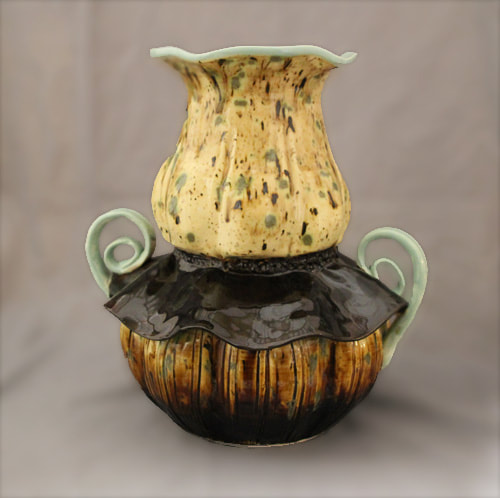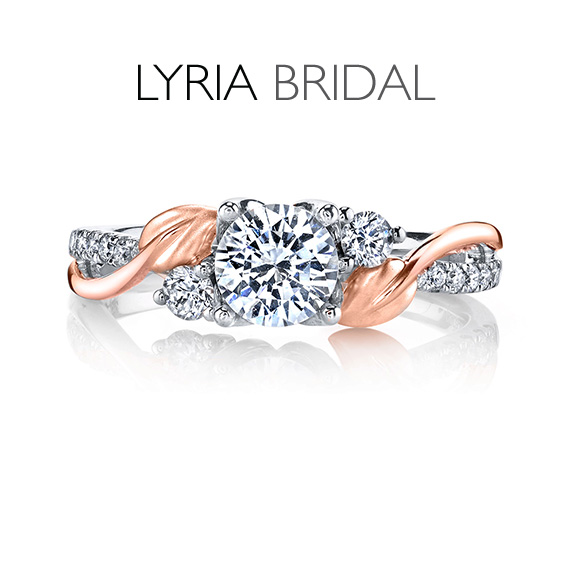Table of Contents
In the late 19th and early 20th centuries, a remarkable artistic movement emerged, sweeping across Europe and the United States. This movement, known as Art Nouveau, celebrated the beauty and intricacy of nature in all its forms. Art Nouveau’s distinctive style, characterized by its sinuous lines, organic motifs, and a harmonious blend of art and functionality, left an indelible mark on the world of art, architecture, and design. In this article, we will explore the whimsical elegance of Art Nouveau, a movement that sought to bring the enchantment of the natural world into everyday life.
In the late 19th and early 20th centuries, a remarkable artistic movement emerged, sweeping across Europe and the United States. This movement, known as Art Nouveau, celebrated the beauty and intricacy of nature in all its forms. Art Nouveau’s distinctive style, characterized by its sinuous lines, organic motifs, and a harmonious blend of art and functionality, left an indelible mark on the world of art, architecture, and design. In this article, we will explore the whimsical elegance of Art Nouveau, a movement that sought to bring the enchantment of the natural world into everyday life.
Art Nouveau was more than just a style; it was a cultural and philosophical response to the rapid industrialization and urbanization of the late 19th century. As cities grew, many artists and designers yearned for a return to nature, a way to escape the cold, mechanical world of factories and machines. Art Nouveau offered a breath of fresh air, a chance to reconnect with the organic, the fluid, and the graceful.
One of the defining features of Art Nouveau was its emphasis on total design. It wasn’t just about creating a beautiful painting or a striking piece of furniture; it was about designing entire spaces and environments that immersed people in a world of natural wonder. Architects, painters, sculptors, and craftsmen collaborated to create holistic, immersive experiences that captivated the senses. This holistic approach gave rise to some of the most iconic and memorable interiors and exteriors of the era.
One area where Art Nouveau truly shone was in the realm of architecture. The movement redefined the way buildings were designed and decorated. Instead of the rigid, symmetrical structures of the past, Art Nouveau architects embraced curves and asymmetry. They adorned buildings with elaborate ironwork, stained glass windows, and intricate tile mosaics, all inspired by the forms of nature. The result was a harmonious blend of man-made structures and the natural world, where buildings seemed to grow organically from the earth.
In addition to architecture, Art Nouveau made its mark in the world of decorative arts. Furniture, jewelry, and everyday objects became works of art in their own right. Chairs and tables featured sinuous, flowing lines, often adorned with delicate floral patterns. Jewelry designers incorporated motifs of insects, flowers, and vines, creating pieces that were both beautiful and symbolic.
The influence of Art Nouveau extended beyond the realms of fine art and design. It also played a significant role in shaping the world of advertising and graphic design. Posters and advertisements from the Art Nouveau era are characterized by their ornate typography and vibrant, flowing illustrations. These posters were not just advertisements; they were works of art in themselves, capturing the essence of the products they promoted with a sense of enchantment and allure.
Art Nouveau was a movement deeply rooted in the past, drawing inspiration from the natural world and the craftsmanship of earlier centuries. Yet, it was also forward-looking, anticipating the modernist movements that would follow in the 20th century. Its celebration of individualism, creativity, and the fusion of art and everyday life laid the groundwork for the artistic innovations of the decades to come.
In conclusion, Art Nouveau was a captivating artistic movement that sought to infuse the beauty of the natural world into every facet of human existence. Its legacy endures in the graceful curves of architecture, the intricate designs of decorative arts, and the enduring allure of its posters and advertisements. Art Nouveau reminds us of the timeless power of nature’s beauty and the enduring appeal of art that seeks to capture its whimsical elegance.
For a comprehensive look at this subject, we invite you to read more on this dedicated page: Art Nouveau | History, Characteristics, Artists, & Facts | Britannica
The Birth of Art Nouveau
Art Nouveau, which translates to “New Art” in French, emerged as a reaction to the industrialization and mass production that defined the late 19th century. Artists and designers of the era yearned for a return to craftsmanship and sought inspiration in the beauty of the natural world. They drew inspiration from various sources, including plant forms, insects, and the graceful curves of the female figure. This deep connection to nature’s aesthetics became the hallmark of Art Nouveau.
Art Nouveau, meaning “New Art” in French, was a transformative artistic movement that emerged as a poignant reaction to the industrialization and mass production that characterized the late 19th century. During this period, artists and designers were keenly aware of the erosion of craftsmanship and sought to rekindle the spirit of artistry and individuality that was becoming increasingly rare.
A Retreat to Craftsmanship: In the face of factories churning out identical products, Art Nouveau represented a retreat to the ideals of craftsmanship. Artists and artisans found solace in the notion of creating unique, handcrafted pieces that bore the mark of their individual creativity and skill. This commitment to artisanal craftsmanship was a rebellion against the mechanization of art.
Nature as Muse: At the heart of Art Nouveau was a deep and abiding love for the natural world. Artists drew inspiration from the organic beauty of nature, exploring its intricate forms and harmonious curves. They found endless fascination in plant life, insects, and the graceful contours of the female form. This profound connection to nature’s aesthetics permeated every aspect of Art Nouveau design.
The Whiplash Curve: One of the defining features of Art Nouveau is the sinuous, “whiplash” curve. This fluid, undulating line was a departure from the rigid and geometric designs of the past. It sought to capture the dynamic and ever-changing forms found in nature, such as the tendrils of vines and the graceful arcs of flowers. This new approach to line and form was revolutionary in the world of design.
Embracing Ornamentation: Art Nouveau embraced ornamentation with exuberance. Intricate patterns, swirling motifs, and ornate decorations adorned everything from furniture and architecture to jewelry and textiles. This profusion of ornamentation was an assertion of art’s capacity to elevate the everyday into something extraordinary.
Synthesis of the Arts: Art Nouveau was a holistic movement that sought to unite all forms of art and design. It blurred the lines between fine art and applied arts, bringing together painters, sculptors, architects, and craftsmen in a collaborative effort to create total works of art, or “Gesamtkunstwerk.” This synthesis of the arts aimed to infuse beauty into every aspect of life.
Legacy of Beauty: The legacy of Art Nouveau endures in the appreciation of beauty for its own sake. Its celebration of the natural world, its devotion to craftsmanship, and its rejection of conformity continue to inspire artists and designers. Art Nouveau remains a testament to the enduring power of art to capture the essence of a bygone era and to remind us of the importance of preserving the unique and the handcrafted in an increasingly mechanized world.
In summary, Art Nouveau was not merely an artistic movement; it was a cultural and philosophical response to the industrial age. It championed the beauty of nature, the value of craftsmanship, and the individuality of artistic expression. Its legacy continues to influence contemporary design and serves as a reminder of the enduring allure of handcrafted, nature-inspired beauty in a world marked by mass production and uniformity.
Additionally, you can find further information on this topic by visiting this page: Art Nouveau | Essay | The Metropolitan Museum of Art | Heilbrunn …

Organic Lines and Whimsical Forms
At the heart of Art Nouveau’s design philosophy were sinuous and flowing lines. These lines, often referred to as “whiplash” curves, mimicked the growth patterns of plants and the gentle movements of flowing water. They adorned everything from posters and jewelry to furniture and architecture. This emphasis on fluidity and asymmetry gave Art Nouveau an inherently sensual and almost dreamlike quality.
“Art Nouveau, with its enchanting design philosophy, placed sinuous and flowing lines at its very core. These lines, often characterized as ‘whiplash’ curves, were a homage to the graceful growth patterns of plants and the gentle undulations of flowing water. They wound their way through the artistic landscape, leaving their mark on everything from posters and jewelry to furniture and architecture. This profound emphasis on fluidity and asymmetry was the key to unlocking Art Nouveau’s inherent sensuality, infusing it with an almost dreamlike quality that captivated the senses.
In the world of Art Nouveau, nature reigned supreme as a source of inspiration. The ‘whiplash’ curves echoed the sinuous forms of vines, tendrils, and blossoms, seamlessly weaving organic motifs into every creation. It was as if the very essence of nature had been distilled into each piece of art, beckoning viewers to immerse themselves in its rhythmic, ever-changing beauty.
One of Art Nouveau’s most enchanting qualities was its ability to blur the boundaries between art and everyday life. The flowing lines graced not only canvases but also functional objects, transcending the conventional distinctions between ‘fine’ and ‘applied’ arts. Furniture adorned with these sinuous curves became not just utilitarian but also sensual, an embodiment of the artistic spirit infused into daily existence.
Architecture, too, succumbed to the charms of Art Nouveau. Buildings embraced the ‘whiplash’ curves, with facades that seemed to sway like a field of tall grass in a gentle breeze. The very structures seemed alive, their organic forms inviting inhabitants to dwell within their embrace.
Art Nouveau’s sensual and almost dreamlike quality was a reflection of the era in which it emerged. It was a time when artists and designers sought to break free from the constraints of tradition, embarking on a quest for greater self-expression and liberation. The flowing lines of Art Nouveau represented a departure from the rigidity of previous artistic movements, inviting viewers to surrender to the intoxicating allure of its organic forms.
In conclusion, Art Nouveau’s ‘whiplash’ curves, inspired by the sinuous beauty of nature, granted it a sensuous and dreamlike quality that left an indelible mark on the art and design world. Its ability to merge the artistic and the practical, to blur the boundaries between reality and dreams, is a testament to its enduring appeal. Art Nouveau remains a reminder that in the world of creativity, the possibilities are as endless and flowing as the ‘whiplash’ curves themselves, inviting us to lose ourselves in the captivating beauty of the natural world.”
Explore this link for a more extensive examination of the topic: Art Nouveau – The Art History Archive

Nature-Inspired Motifs
One of the defining characteristics of Art Nouveau was its extensive use of nature-inspired motifs. Designers looked to the plant kingdom for inspiration, incorporating floral patterns, leaves, vines, and blossoms into their creations. Insects like dragonflies, butterflies, and peacocks also found a prominent place in Art Nouveau design. These motifs adorned not only decorative objects but also architectural elements, such as stained glass windows and ornate ironwork.
nullAdditionally, you can find further information on this topic by visiting this page: The Evolution of Nature-Inspired Jewelry – Lotus Fun

Total Art: The Fusion of Art and Functionality
Art Nouveau was not limited to traditional forms of art; it aimed to permeate every aspect of daily life. This all-encompassing approach, often referred to as “total art” or “Gesamtkunstwerk” in German, sought to create a seamless integration of art and functionality. Furniture, buildings, ceramics, and even everyday items like silverware and doorknobs were all subjected to the enchanting touch of Art Nouveau design.
Art Nouveau, with its revolutionary “total art” or “Gesamtkunstwerk” approach, ushered in a transformative chapter in the history of art and design. This movement was not content with merely adorning traditional forms of art; it aspired to infuse beauty and artistic expression into every facet of daily life. Here’s an extended exploration of how Art Nouveau’s embrace of “total art” reshaped our world, touching everything from architecture to the most ordinary objects:
Seamless Integration of Art and Functionality: At the heart of Art Nouveau’s “total art” concept was the idea that art and functionality should seamlessly coexist. Furniture became not just utilitarian but an expression of individuality and aesthetic innovation. Buildings transcended mere shelter to become living works of art. Everyday items, from teapots to inkwells, were elevated from mundane to magnificent, turning routine tasks into opportunities for sensory delight.
Architectural Marvels: Art Nouveau architecture stands as a testament to the movement’s ambition to blur the lines between art and daily life. Buildings designed in this style often featured sinuous lines, organic motifs, and asymmetrical designs. Elaborate facades, wrought ironwork, and stained glass windows transformed urban landscapes into enchanting dreamscapes. The aim was not just to house people but to envelop them in artistry and inspiration every day.
Interior Elegance: The interiors of Art Nouveau spaces were opulent and enchanting. Rooms were adorned with flowing lines, floral and natural motifs, and rich, vibrant colors. Furniture pieces were sculpted with sinuous curves and intricate patterns, creating a sense of harmony and beauty. The notion of “total art” meant that even the smallest details, like light fixtures and door handles, were designed with meticulous care to contribute to the overall aesthetic experience.
Innovation in Craftsmanship: Art Nouveau spurred innovation in craftsmanship. Artisans and craftsmen experimented with new materials and techniques, pushing the boundaries of what was possible. Glassmakers created exquisite stained glass panels, ceramists crafted intricate pottery, and metalsmiths fashioned intricate silverware. The fusion of art and craftsmanship resulted in objects that were both functional and exquisite works of art.
Everyday Elegance: Art Nouveau demonstrated that even the most mundane objects could be imbued with elegance and artistic flair. The movement’s influence extended to household items such as cutlery, doorknobs, and even wallpaper. Dining became a visual feast with ornate tableware, while opening a door became an aesthetic pleasure with beautifully designed handles.
Global Impact: Art Nouveau’s “total art” concept had a profound global impact, with variations of the movement emerging in different regions, from France to Austria, Belgium to the United States. Each adaptation retained the core philosophy of integrating art into daily life, resulting in a rich tapestry of Art Nouveau expressions around the world.
In conclusion, Art Nouveau’s “total art” approach was a visionary departure from traditional art movements. It sought to break down the barriers between art and everyday life, infusing beauty, elegance, and artistic expression into every corner of our existence. This approach not only transformed the physical world around us but also challenged our perception of what constitutes art. Art Nouveau remains a testament to the enduring power of artistic innovation and serves as a timeless reminder that art can, and should, be an integral part of our daily lives, elevating the ordinary into the extraordinary.
For additional details, consider exploring the related content available here Bauhaus Movement Overview | TheArtStory

Architectural Marvels
Art Nouveau architecture produced some of the world’s most iconic buildings. The works of architects like Antoni Gaudí in Spain and Victor Horta in Belgium are celebrated examples of this style. Gaudí’s Sagrada Familia in Barcelona, with its organic forms and intricate facades, remains a testament to the visionary power of Art Nouveau in architecture.
Art Nouveau, a movement that graced the late 19th and early 20th centuries, left an indelible mark on the architectural world. While Antoni Gaudí’s Sagrada Familia in Barcelona is undoubtedly a masterpiece of this style, there are numerous other iconic buildings and architects that exemplify the essence of Art Nouveau. Let’s explore how this architectural movement shaped the world:
Victor Horta’s Brussels Art Nouveau: Belgium’s Victor Horta, often dubbed the “father of Art Nouveau,” crafted exquisite townhouses with sinuous lines, ornate ironwork, and stained glass. His Hôtel Tassel and Hôtel Solvay in Brussels remain quintessential examples of the Art Nouveau spirit.
Hector Guimard’s Paris Metro Stations: In Paris, Hector Guimard’s Art Nouveau designs for metro stations are iconic. The fluid, plant-inspired ironwork entrances, characterized by their organic forms and flowing lines, have become symbols of the city.
Louis Comfort Tiffany’s Stained Glass: While primarily known for his stained glass art, Louis Comfort Tiffany’s influence extended to architecture. His work can be seen in the design of numerous Art Nouveau buildings and interiors, particularly in the United States.
Jugendstil in Germany and Austria: Germany and Austria contributed significantly to Art Nouveau with the Jugendstil movement. Otto Wagner’s Majolikahaus in Vienna and Henry van de Velde’s creations in Germany showcase the movement’s embrace of innovative design and craftsmanship.
Hector Guimard’s Castel Béranger: Beyond the Paris Metro, Guimard’s Castel Béranger in Paris is another architectural gem. This apartment building features his signature Art Nouveau ironwork and innovative use of materials, creating a harmonious blend of form and function.
Riga’s Art Nouveau District: Riga, Latvia, boasts one of the world’s largest collections of Art Nouveau buildings. The city’s Art Nouveau district showcases the style’s diverse interpretations, from floral motifs to mythological symbols.
Art Nouveau’s Global Influence: Art Nouveau transcended borders, influencing architecture worldwide. In Catalonia, apart from Gaudí’s masterpieces, Lluís Domènech i Montaner’s Hospital de Sant Pau is a stunning example of Art Nouveau’s presence.
Art Nouveau’s Legacy: The legacy of Art Nouveau endures, with its fusion of natural motifs, innovative materials, and flowing lines still influencing contemporary architects and designers. It remains a source of inspiration for those who seek to capture the spirit of an era characterized by artistic liberation and creativity.
In summary, Art Nouveau architecture is a treasure trove of innovation, beauty, and artistic expression. While Gaudí’s Sagrada Familia is a crowning jewel, it is just one facet of this global movement that birthed numerous iconic buildings and visionary architects. Art Nouveau’s enduring influence continues to shape and enrich the world of architecture, reminding us of the boundless possibilities that emerge when art and design unite in harmonious splendor.
Additionally, you can find further information on this topic by visiting this page: Fantasy Fairytale Homes in Art Nouveau- Intricate Grayscale …

Legacy and Conclusion
While the Art Nouveau movement was relatively short-lived, its influence on subsequent design movements and artistic sensibilities has endured. It paved the way for the Art Deco style of the 1920s and 1930s and continues to inspire contemporary artists and designers. Its whimsical elegance, celebration of nature, and fusion of art and functionality remind us of the enduring power of creativity and the timeless allure of the natural world. Art Nouveau serves as a testament to the idea that, in art and design, nature’s beauty and complexity are a wellspring of inspiration that knows no bounds.
The Art Nouveau movement, though brief in its historical duration, left an indelible mark on the world of art and design that continues to captivate and inspire us today. Its influence transcended its own time, providing a foundation upon which subsequent design movements and artistic sensibilities have been built.
Art Deco Elegance: Art Nouveau served as a precursor to the Art Deco style of the 1920s and 1930s. While Art Nouveau embraced flowing, organic forms, Art Deco was characterized by its geometric precision and opulent detailing. Yet, both movements shared a common thread of celebrating craftsmanship and artistic expression within functional design. Art Nouveau’s influence can be seen in the emphasis on aesthetics and the fusion of art with functionality that persisted in Art Deco and later design movements.
Contemporary Inspiration: The legacy of Art Nouveau extends into contemporary art and design. Its whimsical elegance and the celebration of nature’s beauty remain a wellspring of inspiration for artists and designers alike. Today, you can find echoes of Art Nouveau in contemporary architecture, fashion, and even digital art. The movement’s ability to capture the essence of the natural world in its designs continues to resonate with modern sensibilities.
Timeless Fusion of Art and Nature: At its core, Art Nouveau reminds us of the enduring power of creativity and the timeless allure of the natural world. Its seamless fusion of organic forms with artistic expression reiterates the notion that nature’s beauty and complexity are boundless sources of inspiration. This enduring connection to nature is especially relevant in today’s world, where environmental sustainability and a deeper appreciation for the natural world have gained prominence.
Enduring Influence: The legacy of Art Nouveau isn’t confined to art and design alone. Its influence extends into other creative realms, including literature, music, and even social and political movements. It was a reflection of the broader shift towards embracing individualism, artistic expression, and a renewed connection to nature during its time, making it a symbol of cultural change.
In conclusion, the Art Nouveau movement, though relatively short-lived in its historical manifestation, continues to exert a profound and lasting influence on our artistic and design sensibilities. Its ability to blend art and functionality, celebrate the beauty of the natural world, and inspire subsequent movements underscores the enduring power of creativity and the timeless allure of nature’s intricacies. As we look to the future, Art Nouveau stands as a testament to the idea that the wellspring of inspiration found in nature knows no bounds and will continue to shape our creative endeavors for generations to come.
For a comprehensive look at this subject, we invite you to read more on this dedicated page: Art Deco Movement Overview | TheArtStory
More links
You can also read more about this here: Magical Mushroom Coloring Book: Art Nouveau Grayscale Coloring …
